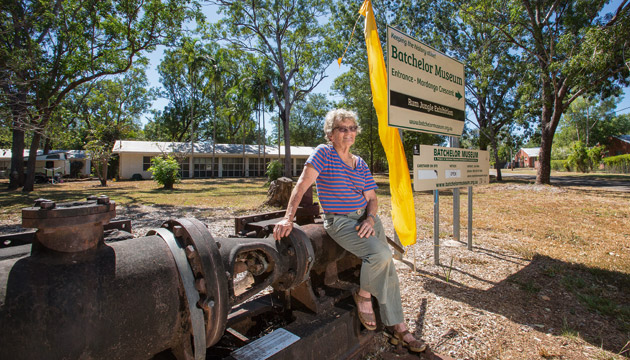Enterprising locals have rescued the town of Batchelor’s war and mining history from oblivion, turning it into a major drawcard.
Story and Photos David Hancock
Top End veterinarian Jan Hills and a number of avid historians and community members have helped turn the township of Batchelor, 100 kilometres south of Darwin, into a unique village bathed in 20th century nostalgia and Indigenous knowledge.
For a town of just 500 people, Batchelor has a remarkable history, with an equally notable modern presence as the gateway to Litchfield National Park and home to the Northern Territory’s largest Indigenous tertiary college, the Batchelor Institute.
“Batchelor was built in the early 1950s,” Jan says. “Our church group used to go down there when I first arrived in Darwin, back in the 1960s. Batchelor had a swimming pool and it always looked beautiful and green. The mine put up a lot of sporting facilities, people did a lot of camping and the kids ran wild through the bush. It was a wonderful place back then and those residents retained great memories.”
The original occupants of the area were the Warai and Kungarakan Aboriginal people. A railway siding and settlement sprang up in the 1870s after the Overland Telegraph Line was built nearby and it was originally called Rum Jungle after an incident in which bullock teamsters were bogged while transporting grog to miners at Pine Creek, further south. According to legend, they drank 80 gallons of rum before they were ‘rescued’.
The South Australian Government settled on the soberer name of Batchelor (after Edgerton Batchelor, a leading South Australian politician) in 1912, when a farm was established to help feed the people of Darwin. The area’s rich soil made it ideal to grow vegetables and fruit such as melons, pumpkins and cabbages, and experiment with different livestock. Batchelor soils remain some of the best in the Top End and have been used to grow edible plants, hay and exotic timbers, including sandalwood.
This story excerpt is from Issue #123
Outback Magazine: February/March 2019










